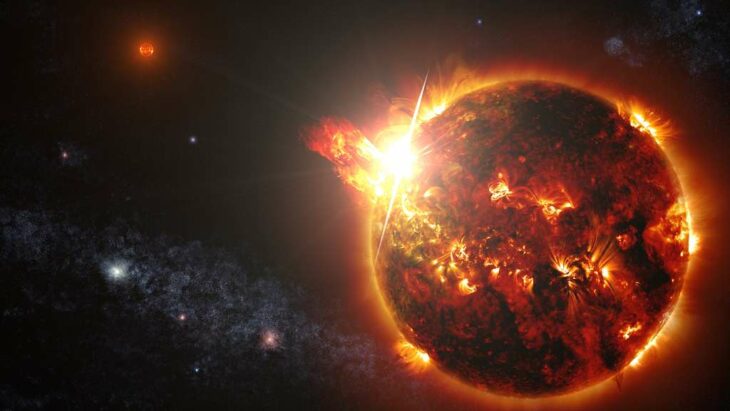Aliens have yet to beam down to Earth and welcome us to the United Federation of Planets, so scientists interested in studying life beyond Earth have to look for it. It’s still possible that researchers could find extraterrestrial life close enough to see it, say, through one of the various rovers, probes, or satellites that have been launched into the solar system. And there is usually a low-level buzz about the possibility of visitors from the stars when an extrasolar object passes by the Sun.
However, many astronomers and astrobiologists are looking farther away, beyond the solar system and around other stars. Scientists can’t send measuring devices out to these distances, at least not on a timescale shorter than centuries, so they have to look for signs of life through telescopes. They call these signs of life biosignatures, whether they’re elements, molecules, or some other characteristics. However, scientists have to be careful when looking for biosignatures because measurement errors or unaccounted-for variables may lead to false positives.
A hypothetical false-positive could look like the following. An exoplanet could have an atmosphere dominated by carbon dioxide, CO2, and nitrogen gas, N2, with some hydrogen-oxygen molecules, none of which imply the presence of life. A burst of material and energy from the exoplanet’s host star, known as a flare, could hit the atmosphere, providing a burst of energy that would enable chemical reactions that produce oxygen gas, O2, and ozone, O3. Those 2 chemicals could imply life-sustaining reactions like photosynthesis are taking place on the exoplanet. When astronomers detect them in the exoplanet’s atmosphere, they could falsely mark it as a candidate for harboring life.
A team of scientists recently investigated how this scenario might play out on an exoplanet and whether it could produce a false positive detection of life. They conducted a series of 6 simulations meant to show reasonable scenarios for flares hitting uninhabited Earth-like planets. They chose the most common type of star near Earth, a red dwarf star, and used data about the chemical composition of Earth’s atmosphere and surface from 4.5 to 4 billion years ago. This was a time when the atmosphere was dominated by CO2, N2, and water. They placed the planets close enough to the star for their surfaces to receive the same amount of light that the Earth receives from the Sun today.
In 5 of the simulations, they changed whether CO2 or N2 was the dominant constituent of the atmosphere, with CO2 making up either 3%, 10%, 30%, 60%, or 80% of the atmosphere. In the sixth simulation, they explored another atmospheric variant with almost no water. They performed this simulation to see extreme cases of potential O2 and O3 production, as the hydrogen in water molecules can capture free-floating oxygen atoms. All their simulated atmospheres contained trace amounts of O2 and O3 from background chemical reactions.
Then they subjected the simulated exoplanet atmospheres to 2 flares each, one with a common strength measured from a real red dwarf, and one that was 100 times stronger and much rarer, known as a superflare. They computed the chemistry outcomes from these flares using a software package called Atmos, then simulated how that would appear from an Earth telescope with the Spectral Mapping Atmospheric Radiative Transfer, or SMART, model.
When all the atmospheres experienced a normal flare event, the amount of O2 and O3 present actually decreased before rebounding to their original levels by around 30 years later. However, between 5 months after the flare and when the oxygen levels returned to normal, there was a slight overshoot of the original oxygen abundances.
The team assessed that differences in the amounts of CO2, hydrogen gas, and water in an exoplanet atmosphere would each cause larger variations in the number of oxygen molecules detectable by astronomers. So, the effects of a standard flare would be very subtle and hard to detect in a real exoplanet. But in the rare superflare scenarios they simulated, they saw large increases in the amount of O2 and O3 present, though these also wound up near pre-flare levels after 30 years.
The team ultimately concluded that flares would likely have only modest and temporary impacts on detecting life on these exoplanets. Even if an astronomer managed to view an exoplanet that was hit by a flare 5 months prior, the O2 and O3 present wouldn’t stand out as unusually high once the error in other chemical measurements was taken into account. But their superflare results suggested that it’s still worthwhile to study the potential for biosignature false positives, as high-energy events can majorly disrupt normal exoplanet conditions.


